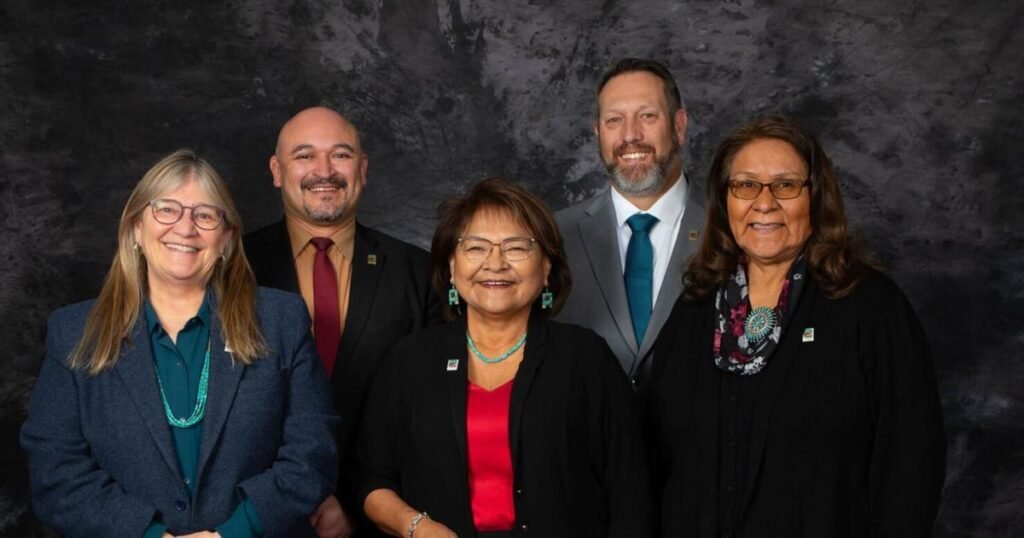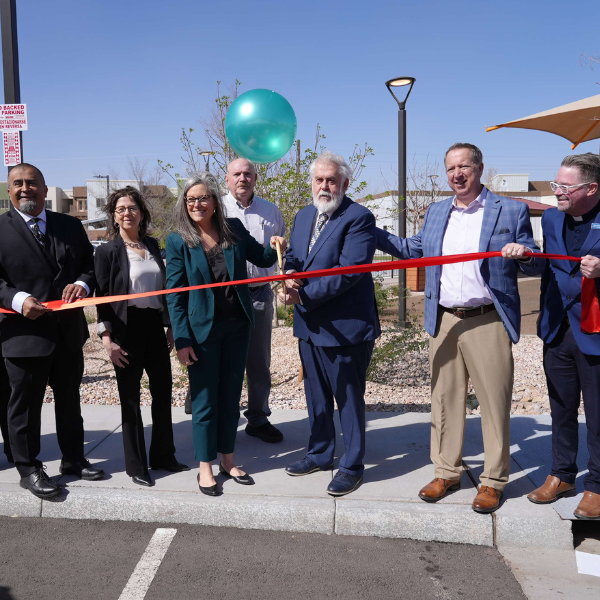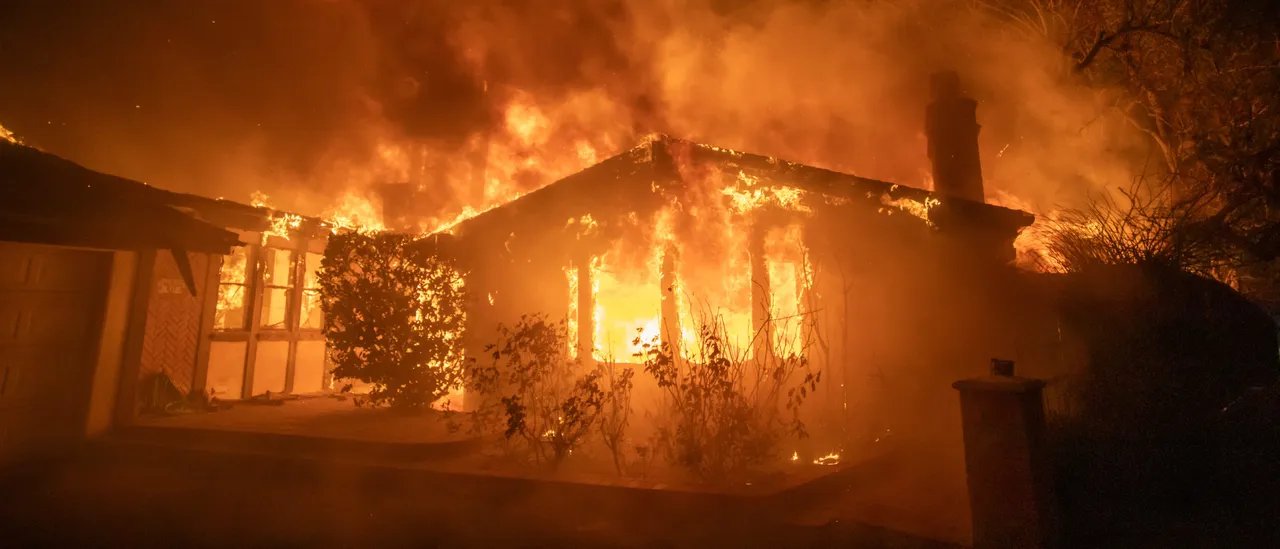After months of meetings featuring presentations from various departments, the Coconino County Board of Supervisors approved the fiscal year 2025 budget.
The fiscal 2025 budget of $484,503,861, a reduction of about $62 million from the fiscal 2024 budget of $546,374,685, takes effect July 1 and includes a continued focus on the county's capital improvement projects, facility upgrades and flood mitigation efforts while serving as a preventative strategy for potential revenue fluctuations due to the economy.
Coconino County Chief Financial Officer Siri Mullaney also detailed why the budget was down from the fiscal year 2024 total, citing the completion of several major flood control and road projects, as well as the “gradual reduction” of federal funding from the American Rescue Plan Act (ARPA) and the Rural Assistance Tribal Consistency Fund.
As part of the June 25 budget meeting, the commission also held truth-in-tax public hearings on Tax Rate 1, Coconino County Flood Control District Tax Rate 2, Coconino County Public Health Services District Tax Rate 2 and Coconino County Library District Tax Rate 2. The four rates were approved with the unanimous consent of all five supervisors, but are scheduled to be officially adopted at the commission’s next meeting on Aug. 13 after the summer recess.
Changes in tax rates
Several members of the public joined the virtual meeting to ask questions about the tax increase, but Mullaney noted that much of Coconino County's tax revenue increase has come primarily from increases in property assessments, not increases in the tax rates themselves.
Mullaney began his presentation with details about the county's primary property tax levy, revealing that the tax rate will actually be reduced from $0.5009 to $0.4944 per $100 of assessed value in order to comply with Arizona's cap on primary property tax increases for counties.
“County main property tax revenues can only increase by 2 percent, but as I mentioned before, property values in Coconino County have been increasing and the increase is just over 2 percent,” Mullaney said. “That means a 2 percent inflationary increase in the tax levied on the main property tax, which is 2 percent. The impact is 97 cents for every $100,000 of value.”
While the county expects to continue to see increased tax revenue from the primary property tax levy, staff continued to emphasize that the primary tax rate has not been increased and Coconino County's tax rates remain much lower than the rest of the state.
“We have the lowest property tax rates in the state of Arizona,” Mullaney said, “and again, because of the way our assessed values are calculated, these rates continue to drop.”
Similarly, secondary property tax rates for flood control districts and public health service districts will remain at the same rates as in 2024, but will generate additional revenue due to increases in assessed property values.
“This increase in property values has an inflationary effect on your return each year,” Mullaney explained, adding that taxable values cannot increase by more than 5% unless there are changes to the property, such as new construction.
Flood control district levies will be $0.50 per $100 of assessed value in 2025, an average increase of $2.04 per $100,000 starting in 2024. Public health service district levies will remain at $0.25 per $100 of assessed value starting in 2024, but will increase by an average of $0.81 per $100,000.
While one tax rate decreased and two remained unchanged, secondary property taxes for the Coconino County Library District will increase compared to 2024. From $0.2756 per $100 of assessed value in 2024, the tax rate will increase to $0.2956 per $100 of assessed value.
Mullaney's presentation listed an average tax increase of $2.89 per $100,000 in property value. The tax increases were implemented to maintain library budgets, avoid cuts to services, and maintain mobile library services.
“What we've heard from the library district is that the assessed fees were insufficient funds to continue operating the library,” Mullaney said. “The library has no other source of funding. It is primarily funded through taxes or when the city chooses to contribute to the operation of the library. So the taxes themselves are very important to the operation of the library.”
To deflect complaints from residents, Mullaney noted that Coconino County has the third lowest combined primary and secondary tax rates in the state. Mullaney also reminded those concerned about the tax bill that Coconino County is only one part of the tax bill, and that there are multiple taxing districts outside the jurisdiction of the County Board of Supervisors, including cities, school districts and fire districts.
Budget outlook for 2025
Mullaney said the 2025 budget has recessionary revenue assumptions built into it due to its reliance on both local and state sales tax revenues, which can fluctuate depending on the state of the economy. Coconino County's revenues total about $90 million from sales taxes from the county ($56 million) and state ($32 million).
In addition to the 2.5% compensatory investment, the budget will continue the capital improvement plan by utilizing the county's road maintenance sales tax for facilities projects such as road improvements, a federally funded Tribal Nation Service Center, renovations to the courthouse on King Street and a new flood control district/emergency operations building. Although ARPA funding will phase out at the end of the calendar year, the county will also continue Superior Court's Division 7 Mental Health Court Services for six months as part of the budget.
As for remaining Flood Control District projects for flood mitigation efforts following the Tunnel and Pipeline Fire, the roughly $10 million in tax revenues is only a fraction of the $70 million budget.
“We're leveraging the $10 million at a 1:6 ratio with additional funding from the federal government for damage mitigation,” Mullaney said. “This is a great example of using local tax dollars to get outside funding from the federal government to accomplish something that local funding alone could not accomplish.”
Federal grants and co-op revenues make up the largest portion of the county's $74.8 million in fund revenue, a figure that remains higher than other years, Mullaney explained.
“This is a really important way that the county can continue to provide services without always relying solely on local revenues,” she added.
Of all funding sources, the Coconino County Sheriff's Office and Jail make up 22% of the operating budget, but are primarily funded through county sales taxes. County courts and probation make up 21% of all funding sources, followed by general government 15%, health and human services 12%, highways and roads 11%, education 8%, flood control 6%, and culture and recreation 5%.
Mullaney's presentation also outlined how each category of general fund is being used, providing examples of how impactful certain revenue sources can be, such as each district's secondary property tax or funding from federal or state grants.
The most dramatic change from an overall view of all funding sources is an increase of up to 35% in the general fund for courts and probation, and up to 31% in general government uses, including county assessors, finance, personnel, recorders, tellers, board of supervisors, etc. Conversely, highways and streets also decreased from 11% to 0.4%, and education decreased from 8% to 1%.
State Influence
One unknown heading into fiscal year 2025 is how state budget cuts, resulting in a 3.5% cut to departments, will affect the county.
“Long term, we don't have the capacity to absorb cuts from the state. What typically happens with these programs is that with state-funded programs, when funding is reduced, the program adjusts to match the amount of state funding,” Mullaney said.
One of the examples given during the presentation was the county's probation department's history of underfunding.
The budget includes a planned funding supplement for the police department to continue paying county employees' salaries regardless of state aid, and Mullaney said there is an expected “impact of at least $500,000” if the state stops increasing probation funding.
Mullaney said the county's outlook could change if this change, or something similar, is seen as having a lasting impact over the next few years.
“If we assume that costs continue to rise in the future, our budget plans may change,” she said. “Assumptions may change regarding overall available resources, but for now we have put our contingency funds to work and will continue to top up to ensure employees are paid in full.”
Coconino County has struggled with the spending limits, culminating in a November vote to permanently raise the base limit by $7.7 million, but Mullaney also noted that state cuts would put even more pressure on counties to comply.
“Any time the state cuts support for a county program and the county general fund has to make up the difference, it impacts our spending limits,” Mullaney said. “This is another thing where we're using local revenues instead of state revenues to continue the same level of service.”
Peru's last meeting
With the budget approved, Tuesday's meeting also marked Coconino County Mayor Steve Peru's last meeting, as the county board of supervisors will be on summer recess through July.
Peru’s second term as County Administrator began in April 2021 after serving from 2006 to 2011. With Peru stepping down from the position to focus on special initiatives and community partnerships, the Board of Supervisors approved the appointment of current Deputy County Administrator Andy Bertelsen as the next County Administrator.
Bertelsen served in the cities of Flagstaff and Sedona before returning to the county in his current role in 2022. Bertelsen's new role officially began July 1.
“It has been a privilege and an honor to serve in this role for a little over three years,” Peluro said Tuesday night. “I look back over the last three years and think, 'Oh my goodness, where did the time go?' We've been through a lot of ups and downs, but I feel like I now have a little bit of a path forward and it seems like the right time to make a change.”
The commission is scheduled to hold a special meeting on Aug. 9 to investigate the primary election before returning to its regular Tuesday meeting scheduled for Aug. 13.







